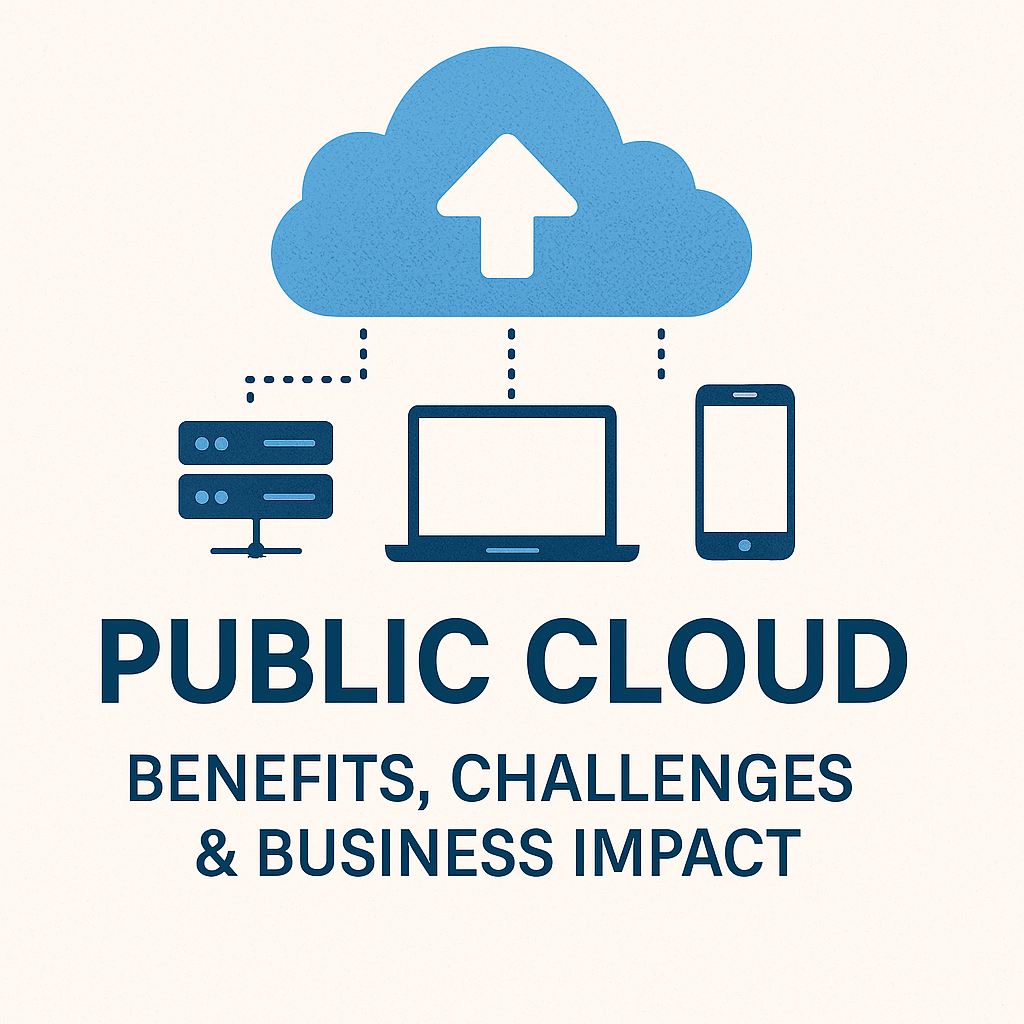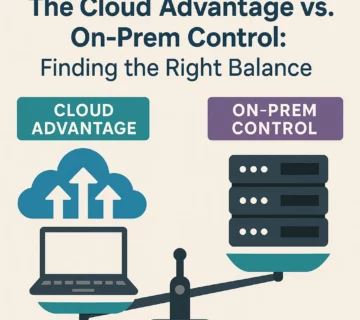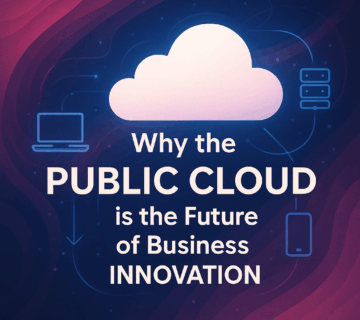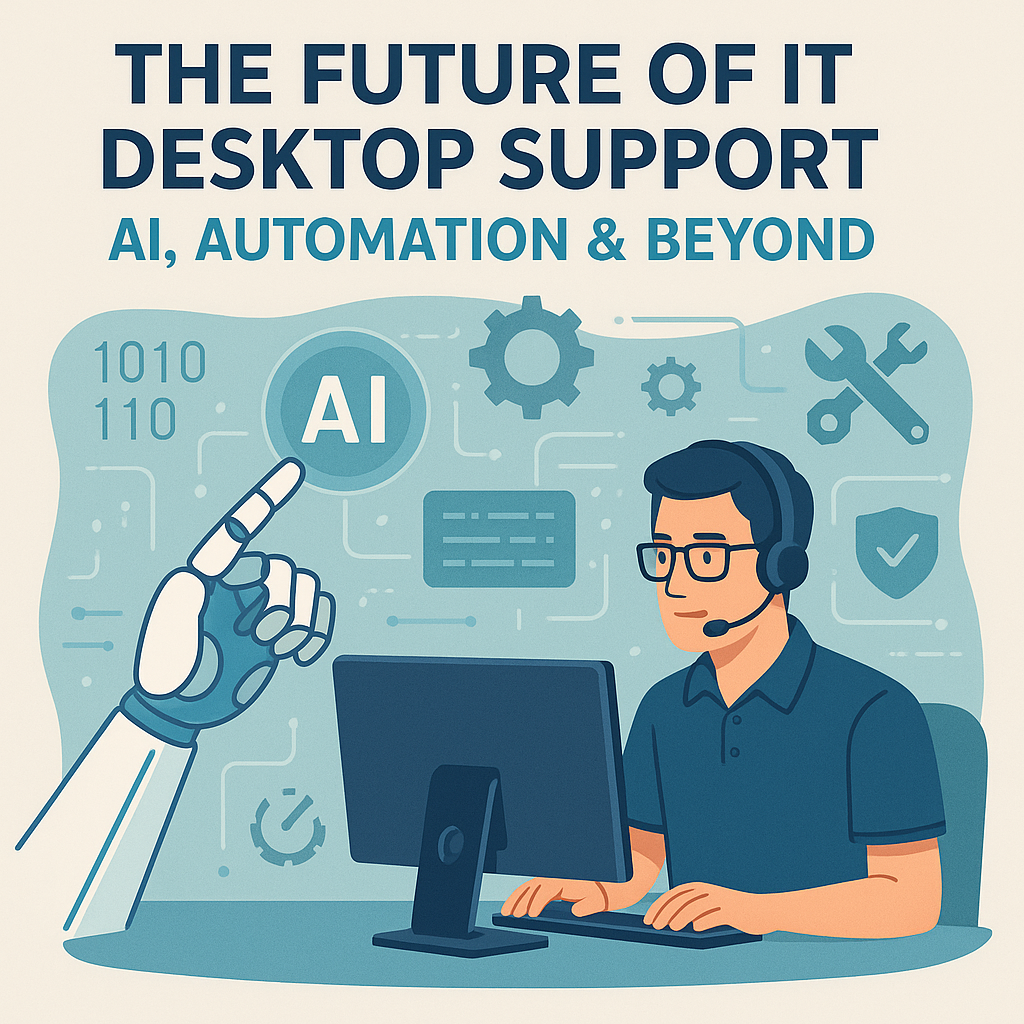How Managed Services Are Evolving with Cloud, Edge & Automation

The managed services landscape is undergoing a fundamental transformation driven by three powerful forces: cloud computing, edge technology, and intelligent automation. This evolution represents more than just technological advancement—it’s reshaping how organizations approach IT infrastructure, operations, and strategic planning. From IT managed services in India to specialized providers offering business IT support Panchkula, the industry is adapting to meet diverse regional and organizational needs.
The New Era of Managed Services
Traditional managed services focused primarily on maintaining existing systems and providing reactive support. Today’s managed service providers (MSPs) are becoming strategic partners, delivering proactive solutions that leverage cutting-edge technologies to drive business outcomes.
The convergence of cloud, edge, and automation has created unprecedented opportunities for organizations to optimize their operations, reduce costs, and accelerate innovation. MSPs are at the forefront of this transformation, evolving their service models to meet the demands of an increasingly digital world. Whether you’re looking for Panchkula managed services or enterprise-level solutions, providers are adapting their offerings to include advanced capabilities.
Cloud Computing: The Foundation of Modern Managed Services
Multi-Cloud and Hybrid Strategies
Modern managed services have embraced multi-cloud architectures as the new standard. Organizations no longer rely on a single cloud provider but instead leverage multiple platforms to optimize performance, cost, and redundancy. MSPs now offer sophisticated cloud management services that span Amazon Web Services, Microsoft Azure, Google Cloud Platform, and private cloud environments.
This multi-cloud approach allows businesses to avoid vendor lock-in while taking advantage of specialized services from different providers. For instance, a company might use AWS for its machine learning capabilities, Azure for enterprise applications, and Google Cloud for data analytics—all managed seamlessly by their MSP.
Cloud-Native Service Models
The shift toward cloud-native architectures has fundamentally changed how managed services are delivered. MSPs are now building services around containerization, microservices, and serverless computing models. This approach enables greater scalability, flexibility, and cost efficiency.
Containerization technologies like Docker and Kubernetes have become standard tools in the MSP toolkit. These technologies allow applications to run consistently across different environments, making it easier to migrate workloads between on-premises and cloud infrastructure.
Regional Adaptation and Local Expertise
Modern managed service providers are recognizing the importance of regional expertise and local market understanding. A Panchkula managed services provider might offer specialized knowledge of local business requirements, regulatory compliance needs, and cultural considerations that global providers may overlook. This regional focus enables more tailored solutions and better customer relationships.
Local providers often combine global best practices with regional expertise, creating service offerings that address specific market needs. This approach is particularly valuable for organizations that require both technical excellence and local support capabilities.
Managed service providers are increasingly adopting Infrastructure as Code practices to deliver more consistent and reliable services. IaC tools like Terraform, CloudFormation, and Ansible enable MSPs to provision and manage infrastructure through code, reducing human error and improving deployment speed.
This approach allows for better version control, testing, and collaboration in infrastructure management. Changes can be reviewed, tested, and deployed systematically, leading to more stable and predictable environments.
Edge Computing: Bringing Services Closer to Users
Distributed Infrastructure Management
Edge computing has introduced new complexities and opportunities for managed services. MSPs must now manage distributed infrastructure that extends from centralized data centers to edge locations closer to end-users. This distributed model requires new approaches to monitoring, security, and maintenance.
Edge computing enables real-time processing of data at the source, reducing latency and improving user experience. For applications requiring immediate response times—such as autonomous vehicles, industrial IoT, or augmented reality—edge computing is essential.
5G Integration and Opportunities
The rollout of 5G networks has accelerated the adoption of edge computing, creating new opportunities for managed service providers. 5G’s low latency and high bandwidth capabilities enable new applications and use cases that were previously impossible.
MSPs are developing specialized services around 5G and edge computing, including network slicing, mobile edge computing (MEC), and private 5G networks. These services help organizations take advantage of 5G’s capabilities while managing the complexity of deployment and operation.
IoT and Sensor Network Management
The proliferation of Internet of Things (IoT) devices has created massive amounts of data that need to be processed and analyzed. MSPs are developing comprehensive IoT management platforms that handle device provisioning, data collection, analysis, and visualization.
These platforms integrate with edge computing infrastructure to process data locally, reducing bandwidth requirements and improving response times. MSPs provide end-to-end IoT solutions that include device management, connectivity, data processing, and application development.
Automation: The Intelligence Behind Modern Managed Services
Artificial Intelligence and Machine Learning Integration
AI and ML technologies are revolutionizing how managed services operate. MSPs are implementing intelligent automation systems that can predict and prevent issues before they impact business operations. These systems analyze patterns in system performance, user behavior, and historical data to identify potential problems.
Machine learning algorithms help optimize resource allocation, predict capacity needs, and automate routine tasks. This intelligence enables MSPs to provide more proactive and efficient services while reducing operational costs.
Robotic Process Automation (RPA)
RPA has become a cornerstone of modern managed services, automating repetitive tasks that previously required human intervention. MSPs use RPA to handle routine activities such as user account management, system updates, backup verification, and compliance reporting.
This automation reduces the risk of human error while freeing up technical staff to focus on more strategic initiatives. RPA implementations can often deliver ROI within months by reducing operational costs and improving service consistency.
Predictive Analytics and Proactive Monitoring
Advanced analytics capabilities enable MSPs to move from reactive to predictive service models. By analyzing historical data, system metrics, and external factors, MSPs can predict when systems might fail or when additional resources will be needed.
This predictive approach allows organizations to address issues before they impact users, reducing downtime and improving overall system reliability. Predictive analytics also helps optimize resource utilization and capacity planning.
The Convergence Effect: Integrated Service Delivery
Unified Management Platforms
The convergence of cloud, edge, and automation has led to the development of unified management platforms that provide a single pane of glass for managing diverse IT environments. These platforms integrate monitoring, management, and automation capabilities across hybrid and multi-cloud environments.
Unified platforms enable MSPs to deliver consistent services regardless of where applications and data reside. This consistency is crucial for maintaining security, compliance, and operational efficiency across complex IT landscapes.
DevOps and Site Reliability Engineering (SRE)
Modern managed services increasingly incorporate DevOps practices and Site Reliability Engineering principles. These methodologies emphasize collaboration between development and operations teams, continuous integration and deployment, and reliability-focused engineering practices.
MSPs are adopting these practices to improve service quality and deployment speed. By integrating development and operations workflows, MSPs can deliver more responsive and reliable services to their clients.
Industry-Specific Transformations
Healthcare and Telemedicine
The healthcare industry has seen dramatic changes in managed services requirements, particularly accelerated by the COVID-19 pandemic. MSPs are now providing specialized services for telemedicine platforms, electronic health records, and medical device connectivity.
These services must comply with strict regulations such as HIPAA while providing high availability and security. Edge computing enables real-time processing of medical data, while automation helps manage compliance and reporting requirements.
Financial Services and Fintech
Financial services organizations require managed services that can handle high-volume transactions, maintain strict security standards, and comply with regulatory requirements. MSPs are developing specialized services for payment processing, fraud detection, and regulatory reporting.
The integration of AI and ML enables more sophisticated fraud detection and risk management capabilities. Edge computing supports real-time transaction processing, while automation helps maintain compliance with evolving regulations.
Manufacturing and Industrial IoT
Manufacturing organizations are leveraging managed services to implement Industry 4.0 initiatives. MSPs provide services for industrial IoT platforms, predictive maintenance systems, and supply chain optimization.
Edge computing enables real-time processing of sensor data from manufacturing equipment, while AI and ML help optimize production processes and predict equipment failures. Automation streamlines quality control and compliance reporting.
Security in the New Managed Services Landscape
Comprehensive Security and Communication Solutions
The evolution of managed services has expanded beyond traditional IT infrastructure to include comprehensive security and communication solutions. Managed cyber security providers Panchkula and similar regional specialists are offering integrated services that combine traditional IT support with modern security frameworks.
These providers offer affordable cyber security service Panchkula options that include threat monitoring, incident response, and compliance management. Additionally, many are expanding their portfolios to include VoIP services in Panchkula, enabling organizations to modernize their communication infrastructure while maintaining security standards.
The integration of security services with managed IT operations provides several advantages. Organizations benefit from consistent security policies across all systems, improved incident response times, and cost-effective security management that scales with business growth.
The shift to distributed, cloud-based architectures has made traditional perimeter-based security models obsolete. MSPs are implementing Zero Trust security models that verify every user and device before granting access to resources.
Zero Trust architectures require continuous verification and monitoring, making them ideal for automated security management. MSPs use AI and ML to analyze user behavior and detect anomalies that might indicate security threats.
Compliance and Governance
As organizations adopt more complex IT architectures, maintaining compliance with regulatory requirements becomes increasingly challenging. MSPs are developing automated compliance management services that continuously monitor and report on compliance status.
These services help organizations maintain compliance with regulations such as GDPR, HIPAA, SOX, and industry-specific standards. Automation ensures that compliance monitoring is consistent and comprehensive across all environments.
Threat Detection and Response
Modern managed security services leverage AI and ML to provide advanced threat detection and response capabilities. These systems can analyze vast amounts of security data to identify potential threats and automatically respond to certain types of attacks.
Machine learning algorithms continuously improve their ability to detect new and evolving threats, while automation enables rapid response to security incidents. This combination provides organizations with robust protection against cyber threats.
The Future of Managed Services
Quantum Computing Integration
While still in its early stages, quantum computing represents the next frontier for managed services. MSPs are beginning to explore how quantum computing can be integrated into their service offerings, particularly for applications requiring massive computational power.
Quantum computing could revolutionize cryptography, optimization problems, and machine learning applications. MSPs will need to develop new expertise and service models to support quantum computing applications.
Sustainable and Green IT
Environmental sustainability is becoming increasingly important for organizations worldwide. MSPs are developing services that help organizations reduce their carbon footprint through optimized resource utilization and energy-efficient infrastructure.
Cloud computing already provides some sustainability benefits through resource sharing and efficiency improvements. Edge computing can further reduce energy consumption by processing data locally rather than transmitting it to distant data centers.
Autonomous IT Operations
The ultimate goal of automation in managed services is to achieve autonomous IT operations that can self-heal, self-optimize, and self-protect. While fully autonomous systems are still in development, MSPs are making significant progress toward this goal.
AI and ML technologies will continue to evolve, enabling more sophisticated automation capabilities. As these technologies mature, MSPs will be able to provide increasingly autonomous services that require minimal human intervention.
Choosing the Right Managed Service Provider
Modernization and Migration Services
As organizations upgrade their technology infrastructure, managed service providers are offering specialized migration and modernization services. Windows 11 migration services represent a critical component of this evolution, helping organizations transition to newer operating systems while maintaining productivity and security.
These migration services extend beyond simple operating system upgrades to include comprehensive planning, testing, and implementation strategies. MSPs help organizations assess their current environment, identify compatibility issues, and develop migration timelines that minimize business disruption.
The success of modernization initiatives depends on proper planning and execution. MSPs provide the expertise needed to navigate complex migrations while ensuring that security, compliance, and performance requirements are met throughout the process.
When selecting an MSP for modern managed services, organizations should evaluate the provider’s technical capabilities across cloud, edge, and automation technologies. Key considerations include their experience with managed services in Panchkula market conditions, local compliance requirements, and regional business practices.
The MSP’s experience with multi-cloud environments and hybrid architectures is crucial for organizations with complex IT requirements. Look for providers with certifications and partnerships with major cloud platforms.
Edge computing capabilities are essential for organizations with distributed operations or real-time processing requirements. Evaluate the MSP’s experience with edge deployments and their network of edge locations.
Automation capabilities should include both infrastructure automation and business process automation. The MSP should demonstrate expertise in AI, ML, and RPA technologies while providing IT support managed services that scale with your organization’s growth.
Service Level Agreements and Performance Metrics
Modern managed services require updated SLAs that reflect the realities of cloud, edge, and automated environments. Traditional uptime metrics may not adequately capture the performance of distributed systems.
Look for MSPs that offer comprehensive performance metrics covering availability, performance, security, and user experience. These metrics should be continuously monitored and reported through automated dashboards.
Comprehensive Support Services
Modern managed service providers are expanding their offerings to include comprehensive support services that address the full spectrum of IT needs. IT desktop support services have evolved beyond traditional help desk functions to include proactive maintenance, security monitoring, and user experience optimization.
These comprehensive support services integrate with cloud, edge, and automation technologies to provide seamless user experiences. Desktop support now includes remote monitoring capabilities, automated patch management, and predictive maintenance that can identify and resolve issues before they impact users.
The integration of desktop support with broader managed services creates efficiencies and improves service quality. Users benefit from consistent support experiences whether they’re dealing with local desktop issues or cloud-based applications.
The evolution of managed services requires a true partnership between organizations and their MSPs. Look for providers that demonstrate a collaborative approach and understanding of your business objectives.
The MSP should be willing to invest in understanding your industry, business processes, and strategic goals. This partnership approach is essential for maximizing the value of modern managed services.
Frequently Asked Questions
What are the main benefits of cloud-based managed services?
Cloud-based managed services offer several key benefits including scalability, cost efficiency, and improved reliability. Organizations can scale resources up or down based on demand, pay only for what they use, and benefit from the redundancy and security of cloud infrastructure. Additionally, cloud-based services enable remote access and collaboration, which has become increasingly important in today’s distributed work environment.
How does edge computing change managed service requirements?
Edge computing introduces new requirements for distributed infrastructure management, real-time processing capabilities, and network optimization. MSPs must be able to manage infrastructure across multiple edge locations while maintaining consistent security and performance standards. This requires specialized expertise in edge technologies, network management, and distributed systems architecture.
What role does automation play in modern managed services?
Automation is fundamental to modern managed services, enabling proactive monitoring, predictive maintenance, and intelligent resource management. AI and ML technologies help MSPs predict and prevent issues before they impact business operations, while RPA automates routine tasks to improve efficiency and reduce human error. This automation allows MSPs to provide more responsive and cost-effective services.
How do I know if my current MSP is keeping up with technological evolution?
Evaluate your MSP’s capabilities in cloud, edge, and automation technologies. They should demonstrate expertise in multi-cloud management, edge computing deployments, and AI/ML-powered automation. Look for evidence of continuous innovation, relevant certifications, and case studies showcasing modern technology implementations. Your MSP should also be able to articulate a clear roadmap for incorporating emerging technologies into their service offerings.
What security considerations are important for modern managed services?
Modern managed services require a comprehensive security approach that includes Zero Trust architecture, continuous monitoring, and automated threat response. Security must be integrated across cloud, edge, and on-premises environments, with consistent policies and controls. MSPs should provide advanced threat detection capabilities, compliance management services, and incident response procedures that can adapt to evolving security threats.
How do managed services support digital transformation initiatives?
Managed services accelerate digital transformation by providing the technical expertise and infrastructure needed to implement modern technologies. MSPs help organizations adopt cloud-native architectures, implement IoT solutions, and leverage AI/ML capabilities without requiring extensive internal expertise. This support enables organizations to focus on their core business while taking advantage of cutting-edge technologies.
What should I expect from managed services in the next 5 years?
The next five years will see continued evolution toward more intelligent, autonomous, and sustainable managed services. Expect greater integration of AI and ML technologies, expanded edge computing capabilities, and more sophisticated automation. Quantum computing may begin to impact certain applications, while sustainability and green IT practices will become increasingly important. MSPs will continue to evolve toward strategic partnership models that focus on business outcomes rather than just technical management.
How do costs compare between traditional and modern managed services?
While modern managed services may have higher initial costs due to advanced technologies and capabilities, they typically provide better long-term value through improved efficiency, reduced downtime, and enhanced performance. The automation and predictive capabilities of modern services can significantly reduce operational costs over time. Organizations should evaluate total cost of ownership including both direct service costs and the business value delivered through improved reliability and performance.
Conclusion
The evolution of managed services driven by cloud, edge, and automation technologies represents a fundamental shift in how organizations approach IT infrastructure and operations. This transformation enables more efficient, reliable, and intelligent IT services that can adapt to changing business requirements.
Organizations that embrace this evolution will be better positioned to compete in an increasingly digital marketplace. The key to success lies in partnering with MSPs that understand these technologies and can deliver integrated solutions that drive business value.
As we look toward the future, managed services will continue to evolve, incorporating new technologies and capabilities that we can only imagine today. The organizations and MSPs that invest in these capabilities now will be best positioned to take advantage of future opportunities and challenges.
The convergence of cloud, edge, and automation has created a new paradigm for managed services—one that promises greater efficiency, intelligence, and value for organizations worldwide. The journey toward this future has already begun, and the organizations that embrace it will thrive in the digital age.








No comment